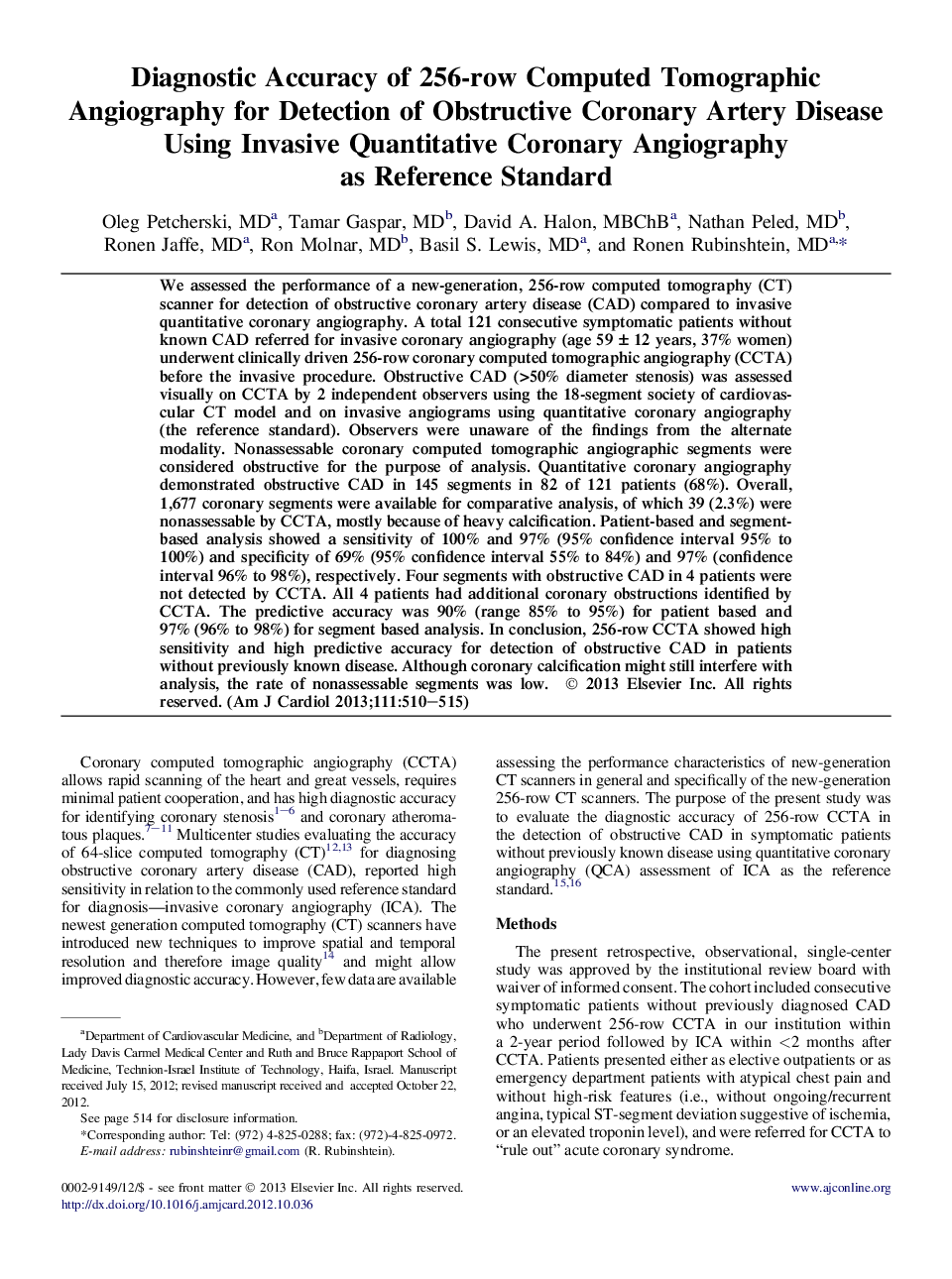| کد مقاله | کد نشریه | سال انتشار | مقاله انگلیسی | نسخه تمام متن |
|---|---|---|---|---|
| 5931179 | 1572200 | 2013 | 6 صفحه PDF | دانلود رایگان |
We assessed the performance of a new-generation, 256-row computed tomography (CT) scanner for detection of obstructive coronary artery disease (CAD) compared to invasive quantitative coronary angiography. A total 121 consecutive symptomatic patients without known CAD referred for invasive coronary angiography (age 59 ± 12 years, 37% women) underwent clinically driven 256-row coronary computed tomographic angiography (CCTA) before the invasive procedure. Obstructive CAD (>50% diameter stenosis) was assessed visually on CCTA by 2 independent observers using the 18-segment society of cardiovascular CT model and on invasive angiograms using quantitative coronary angiography (the reference standard). Observers were unaware of the findings from the alternate modality. Nonassessable coronary computed tomographic angiographic segments were considered obstructive for the purpose of analysis. Quantitative coronary angiography demonstrated obstructive CAD in 145 segments in 82 of 121 patients (68%). Overall, 1,677 coronary segments were available for comparative analysis, of which 39 (2.3%) were nonassessable by CCTA, mostly because of heavy calcification. Patient-based and segment-based analysis showed a sensitivity of 100% and 97% (95% confidence interval 95% to 100%) and specificity of 69% (95% confidence interval 55% to 84%) and 97% (confidence interval 96% to 98%), respectively. Four segments with obstructive CAD in 4 patients were not detected by CCTA. All 4 patients had additional coronary obstructions identified by CCTA. The predictive accuracy was 90% (range 85% to 95%) for patient based and 97% (96% to 98%) for segment based analysis. In conclusion, 256-row CCTA showed high sensitivity and high predictive accuracy for detection of obstructive CAD in patients without previously known disease. Although coronary calcification might still interfere with analysis, the rate of nonassessable segments was low.
Journal: The American Journal of Cardiology - Volume 111, Issue 4, 15 February 2013, Pages 510-515
